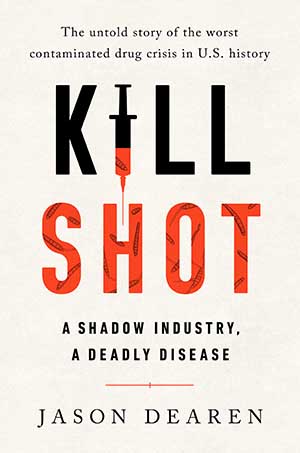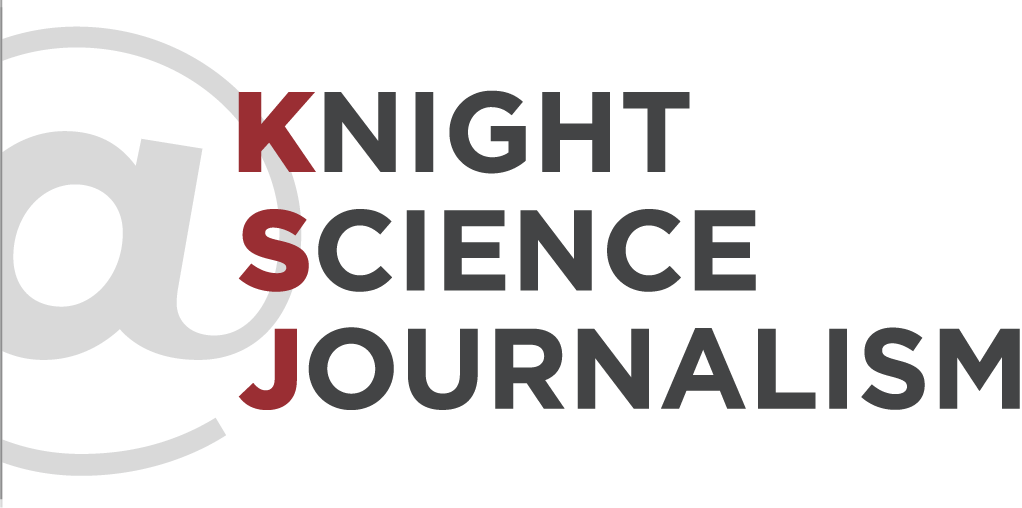Last December, a circuit court judge in Livingston County, Michigan, ruled that two men would stand trial for a staggering 11 counts of second-degree murder. This, however, was not your typical homicide case. The alleged murder weapons weren’t guns or knives; they were vials and syringes. The defendants, Barry Cadden and Glenn Chin, were a pair of bespectacled, middle-aged pharmacists. Save for the bright, tangerine jumpsuits they wore at the hearing, they wouldn’t have looked out of place at a PTA meeting.

Cadden, Chin, and their sudden fall from grace are the subject of “Kill Shot: A Shadow Industry, A Deadly Disease,” the debut book of Associated Press reporter and former Knight Science Journalism Fellow Jason Dearen. Released this week by Penguin Random House, the book tells the sprawling and haunting true story of the deadliest outbreak caused by contaminated pharmaceuticals in American history. The outbreak took place in 2012, when Cadden was co-owner and Chin was lead pharmacist at a Massachusetts-based compounding pharmacy. Compounding pharmacies combine and alter medications to suit the unique needs of individual patients, but as Dearen reports in his book, the largely self-regulated industry has a history of unsafe practices. Cadden and Chin are alleged to have knowingly sold thousands of doses of unsanitary medication, which were later found to have been contaminated with the fungus Exserohilum rostratum. The resulting outbreak led to nearly 800 infections and more than 100 deaths.
To tell this story, Dearen conducted interviews with over 150 sources, traveled to eight different states, and hunted through tens of thousands of pages of public documents, with much of that work being done while he was a Knight Science Journalism Fellow at MIT. In a recent interview, he spoke with me about the origins of his book, and how his time at MIT helped bring it to life. We also talked about the qualities that make for a good book-length project, and his approach to building trust with media-shy sources. (The following interview has been edited for length and clarity.)
R.M. Davis: Where did you first get the idea for Kill Shot?
Jason Dearen: The head pharmacist at the heart of the book and his partner went on trial in 2017. These were two very unique trials — a pair of pharmacists facing murder charges in federal court. That caught my attention. Federal RICO murder cases are really rare, and they’re usually for mobsters and things like that.
Later that year, I found myself casting about for big story ideas. The trials were over by then, and my editor at the time pointed out that a lot of documents would be coming out that had never been made public before. She encouraged me to look into them and see if there were any stories that hadn’t been told.
Once I started reading the transcripts and looking deeper into the case, I realized that not only was this a great story filled with amazing characters, but that there was also a lot of unfinished business in terms of how the government was putting checks on this industry.
RMD: How do you know when there’s more to a story like that? And how do you know when there’s enough to warrant a book-length project?
JD: I think the first thing is really wanting to write a book — which, in some cases, can be a really stupid thing to do. It takes a long time. It’s really hard. It’s usually not a very lucrative pursuit. But it’s something I really wanted to do.
As for the story, it needs to have enough of a narrative sweep and enough detail that, when you’re looking into it for a single newspaper or magazine article, it’s just impossible to cover all that great material. Really, you have to look for a bunch of different stories that all live under the same thematic umbrella, stories that you can weave together and that will sustain interest for that many pages.
That isn’t just about the reader. It has to sustain your interest first, because if you’re getting bored, there’s no way anyone else is going to get excited about it.
RMD: How did KSJ play a role in this project? Is this the story you pitched in your application?
JD: It is. And you know, this also speaks to your previous question about knowing when you have a book-length project. All the stuff I said before is true, but the other thing is that you want people to buy into your project. You want to be able to say, “other people think this is a book-length project, too.” I pitched “Kill Shot” as my KSJ project, and having people like Deborah Blum, Ashley Smart, and Bettina Urcuioli believe in it was huge, and really helped me feel confident about the choices I’d made.
The fellowship gave me direct access to scientists, and to classes in epidemiology and microbiology — things that I didn’t have much of a background in. It allowed me to build up my knowledge and make contacts in those spaces that still talk to me now. And then just access to the libraries — I can’t say enough about that. I spent so much time in the libraries.
RMD: You also made some important contacts in the U.S. Attorney’s Office during your time as a fellow.
JD: Definitely. I mentioned earlier that the criminal murder case was tried in Boston. The main prosecutors on the case were all based in the U.S. Attorney’s Office in Boston. Federal prosecutors are famously difficult to talk to — they’re very secretive and there isn’t really a culture of working with the press. So, I started spending hours of my free time sitting in on a trial that was happening during my fellowship — a related trial involving some of the other pharmacists involved in the story. I introduced myself to the prosecutors, and instead of saying “Hey, I’m a news reporter,” I was able to say “I’m a research fellow and a journalist working on a book about this case.” Eventually, I reached out to one of the prosecutors on LinkedIn, and he got back to me pretty quickly.
RMD: It sounds like you did a lot of old-fashioned shoe-leather work to get to that point as well. Any advice for reporters trying to land an interview with a media-shy source?
JD: If you’re going to ask somebody to give you something — whether it’s their story, access to documents, anything like that — they need to know that you’re serious, and that you’re in it for the long haul. You need to show them that you’re not just going to pop in and pop out, that you’re going to take as much care with their story as you would with your own.
Part of that is doing your homework beforehand. Being aggressive is good, but there have been times when I’ve called people before I was ready to talk to them, and it didn’t go well. So just be prepared, especially if you’re reaching out to someone who is going to be essential to your story. Show them that you’re knowledgeable about the subject — maybe you know even more about certain angles than they do. Show them that you understand where they fit in the story. If you can do that, you’ll find that their guard goes down just a little bit more, and you can get to that next step with them.
R. M. Davis is a research associate with the Knight Science Journalism Program and a student at the MIT Graduate Program in Science Writing.





Leave a Reply